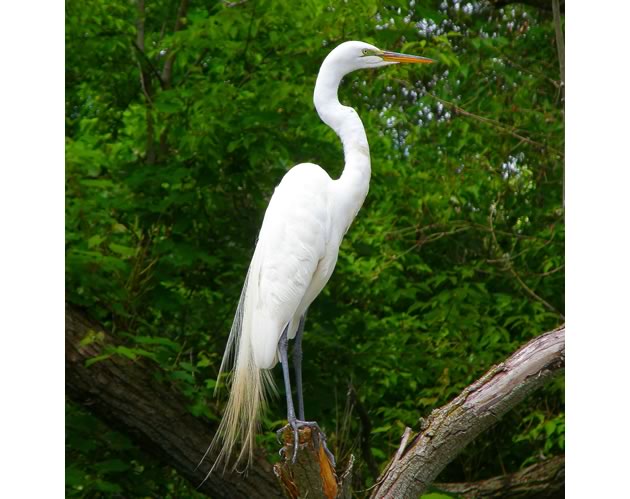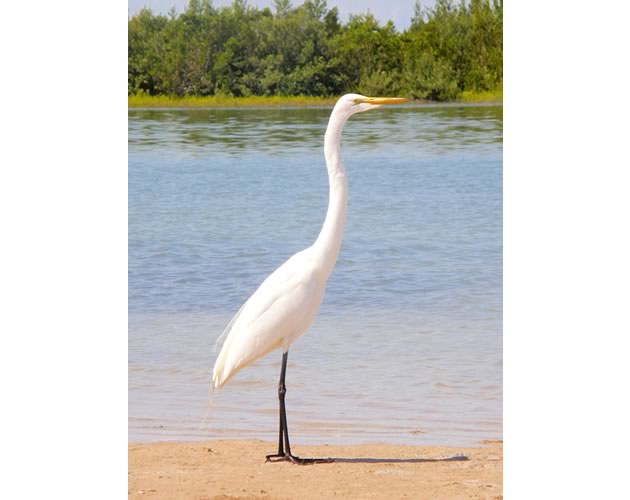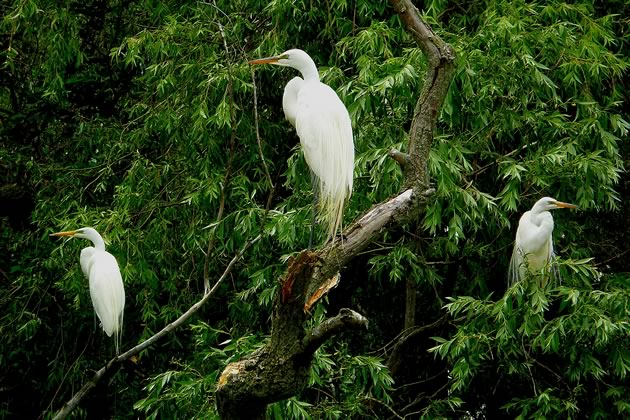Great Egrets
Egrets were being slaughtered by the thousands in 19th century America.
Great egrets evoke notions of southern swamps – of alligators, bald cypress trees and Spanish moss. And yet, at this time of year they can be found in their hundreds, foraging at Luther Marsh in the cool uplands of Dufferin County.
Great egrets are a balm to disillusioned naturalists who are all too familiar with the loss and retreat of wildlife. Egrets represent the promise of recovery. Once teetering on the brink of extinction, they were rescued by a remarkable conservation effort initiated by a small group of women in Boston.
Egrets were being slaughtered by the thousands in 19th century America. Fashion mavens of the day advertised their status by adorning their heads with wildly extravagant hats, sprouting flowers and fruit. But more exotic accoutrements were desired.
Milliners obliged by affixing feathers, heads or the bodies of colourful birds to the hats they sold. Feathers of bluebirds, blue-jays, orioles and, of course, egrets were all commonly used. Stuffed warblers and hummingbirds peeked out blindly between the plumes. Even small stuffed mammals and reptiles clung to the hats of patrician ladies as they sipped their afternoon tea.
Like today, most 19th century consumers thought little about the provenance of the products they bought. As now, purchases of clothing and accessories were motivated primarily by style and price. Sometimes though, uncomfortable truths rattle the public conscience: Think the Bangladeshi garment industry or the blood diamond trade.
The uncomfortable truth of bird slaughter for the millinery trade dawned on a group of well-connected Bostonian women in 1896, and the Audubon Society was born. They launched the first modern-style conservation campaign, successfully pressuring politicians to end the killing.
The success of those early conservation pioneers is evident in the magnificent egrets that grace Luther Marsh in the 21st century.










aaakkkk…..of course I meant *Habitat unit. I guess even teachers make mistakes!
Laurie May on Aug 24, 2014 at 12:41 pm |
Thanks Laurie for your thoughtful note. I’m glad you are able to use the blogs for your Habit… er… Habitat Unit! Yes, teachers do make mistakes. I must admit that I was glad I taught elementary school and not high school – teachers at that level must really have to be on their toes with students listening critically to everything they say. It’s a little more forgiving with the younger kids.
All the best for your return to the classroom in September!
Don Scallen
Don Scallen on Aug 30, 2014 at 11:45 am |
Hi Don: I would like to let you know how much I enjoy reading all of your blog posts. Your writing is always entertaining and informative and your photographs are wonderful. I have often used your articles with my Grade Four students. Your posts are a perfect supplement to our Habit Unit. Thanks so much!
Laurie May on Aug 24, 2014 at 12:39 pm |
Wow.
This is a great story with wonderful photos.
Thank you.
Rosaleen Egan from Alliston, ON on Aug 20, 2014 at 6:34 pm |
Thanks for your kind comments Rosaleen – always great to discover that someone is actually reading (and appreciating!) the blog. If ever you get the chance, consider paddling the Beaver River in the Kimberly area in late summer. The Beaver is very tame in this area and is a mecca for egrets at that time. Luther Marsh, as mentioned in the article), can also be good, though apparently most of the egrets have relocated this year to a less accessible part of the marsh. Further afield, the lower Humber River from Lake Ontario to Bloor Street is always good for a few egrets any time spring through early fall.
Happy birding,
Don Scallen
Don Scallen from Canada on Aug 30, 2014 at 11:39 am |